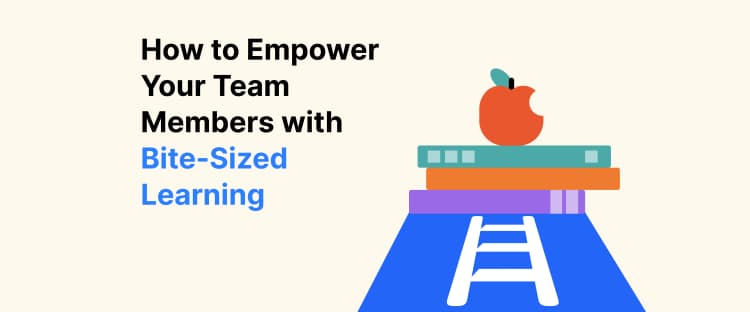In an era marked by rapid technological advancements, where upskilling and reskilling are constant needs, a well-structured learning and development (L&D) strategy isn't just nice to have – it's become vital for business success. Companies worldwide are realizing that fostering a learning culture goes beyond simple training programs; it's a crucial business strategy that drives both employee engagement and retention. But what is a learning and development strategy, and how can you create one that actually works? Let's break these queries while offering some valuable insights along the way.
Understanding a Learning and Development strategy
At its core, an L&D strategy is a comprehensive roadmap outlining how a company will deliver, facilitate, and encourage learning opportunities to enhance employee skills and competencies. It's a development program that ensures your team members perform their roles effectively while equipping them for future challenges and responsibilities.
Through an effective L&D strategy, companies ensure they possess a pool of skilled and competent workers ready to adapt to shifting market dynamics and emerging corporate challenges. A McKinsey report further highlights the impact of strong L&D initiatives, stating that organizations with robust learning programs see 37% higher business performance and are 21% more profitable. These metrics help explain why learning and development has become a cornerstone of modern business objectives, from improving onboarding to supporting succession planning.
The benefits of an effective Learning and Development strategy
When implemented thoughtfully, your L&D initiatives can transform multiple aspects of your business, driving key performance indicators (KPIs) across several areas:
Building stronger teams: By enhancing skills and imparting new ones, L&D programs empower employees to become learners by functioning more collaboratively and efficiently with each other. This strategy is particularly impactful when new learning programs focus on engaging employees in their learning initiatives, fostering a culture of respect, open dialogue, and cooperation.
Improving employee performance: The connection between employee training and performance cannot be overstated. Statista reports that companies investing in extensive training programs have 218% higher income per employee than firms without formal training. Through a mix of e-learning, in-person modules, and real-time learning experiences, you can create cost-effective development opportunities that drive results.
Boosting employee morale and retention: When employees feel that the company is investing in their skills and career development, they feel more valued, leading to higher job satisfaction. About 94% of employees would stay longer at a company that invested in their career development. This focus on development plans and learning opportunities can also make your organization more attractive on LinkedIn and other professional platforms while improving its ability to retain top talent.

Crafting a learning-based company culture: A strong L&D team sends a clear message to existing and potential employees — the organization values growth and development and is willing to foster it. You can create engagement at every level by offering diverse learning styles through your learning management system (LMS), from online courses to mentoring programs.
Developing your Learning and Development strategy: A three-step approach
Developing a successful L&D strategy involves three steps:
1. Identify skill gaps in your team: First, start with a thorough skills gap analysis by evaluating your team's skills and knowledge. Compare this with the skills and knowledge needed for your business goals to determine the training needs your L&D strategy should address across every department.
2. Plan strategic training programs: Once you identify the gaps, prioritize the most critical skills and plan your training accordingly. This process might involve a combination of workshops, online courses, social learning, mentorship, and professional development opportunities, as well as leveraging corporate learning management systems to adopt new methodologies for different skill sets in the company.
3. Deliver Your Training: Finally, implement your training plan. Ensure it is an accessible, flexible, and aligned template that supports employee development and encourages new skills in their respective roles and career aspirations.
While these steps provide a simplified view, it's crucial to remember that creating an effective L&D strategy is an ongoing cycle of assessing, planning, implementing, and evaluating.
Before finalizing your plans, we highly recommend researching the top L&D trends to ensure that your offerings are both current and compelling for your employees.
The future of L&D: Innovative solutions for your team
While creating and implementing an L&D strategy can seem complex and time-consuming, especially for small and medium businesses, new technologies are making it easier. That is where platforms like Headway become game-changers.
Headway offers an all-in-one platform designed to cater to businesses' learning and development needs, regardless of size. Its user-friendly platform simplifies workplace education by providing continuous learning opportunities based on your company's learning needs while eliminating the burdensome tasks of traditional L&D planning and implementation.

Headway aligns with the latest corporate training trends, effortlessly integrating into daily work routines to make employee learning a seamless part of the workday. With platforms like Headway, the workplace learning process becomes streamlined and efficient, allowing businesses to focus on their core operations while fostering a culture of continuous learning.
In short, a comprehensive L&D strategy is an asset for any forward-thinking organization. Companies can unlock their full potential by accurately identifying skill gaps, planning tailored training, and effectively delivering this training. Digital learning platforms offer an effective solution to reinforce the spirit of continuous learning and development while building a better, more engaged workforce in this corporate world.







